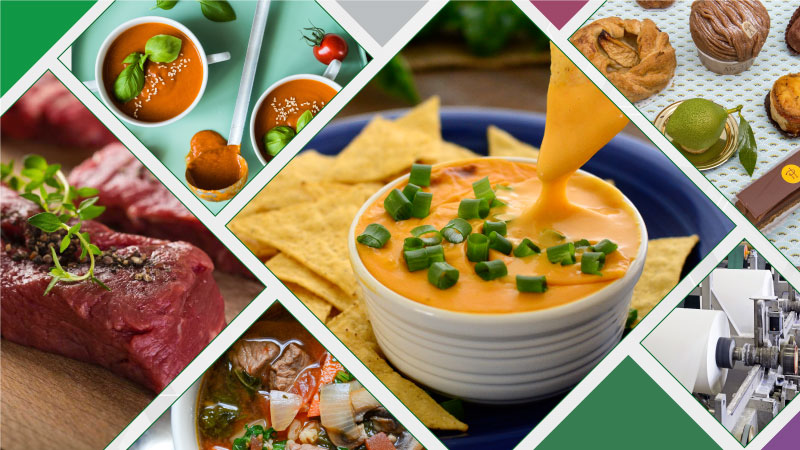They are hydrophilic, long-chain or complex chain, high molecular weight molecules with colloidal properties. Now, this is a little technical jargon, in simple expression we can call them gum. They get mixed in water and water turns into a thick and gummy solution.
Now that we an understanding of what is a hydrocolloid, naturally our next question is where do they come from? Hydrocolloids have been a part of human civilization for a long time. Derived from various agricultural sources like crops and trees we cultivate or seaweeds that grow naturally, they have been an integral part of our food and other useful preparations from old ages. There have been evidences of their use in Ayurveda for medicinal and therapeutical applications. Also, there are evidences of uses by Egyptians as well. They certainly did not know them as ‘hydrocolloids’. But the reason they used materials that contained hydrocolloids was that they were aware of the benefits and utility that they possessed. Today, hydrocolloids are derived from natural sources such as seeds (Guar, Cassia Tora, carob tree pods, etc.), seaweeds, fruit peels, animal extracts, and microbial sources. In modern life, we identified them from many organic and inorganic substances and adopted them for their usefulness.
Now that we know their sources, let’s take a glance at how these materials are converted into powdered forms or commonly called ‘gums’. The source materials containing gums are processed in multi-stages to get these gums in usable powder form.
All seed gums are derived by mostly similar ways of de-husking, separating gums by a thermo-mechanical process and converting in powders. Gums obtained from seaweeds are dissolved in water, filtered and reclaimed. During powder making, utmost care is taken to preserve/retain their multi-dimensional properties. Processing is done in very safe and hygienic conditions that meet highest industrial standards.
Thickening, gelling, emulsifying, stabilization, imparting good mouth-feel, forming a film or layer, suspending particles are all properties common to all hydrocolloids but their consistencies can be different. A few biopolymers have the ability to form gels by trapping water in its polymer chains forming a rigid structure that is resistant to flow while they retain their shape. These gel polymers offer textural properties on a wide spectrum and exhibit features of both a solid and a liquid. Being very rich in functional properties, hydrocolloids have become a vital part of numerous manufacturing processes. Based on their application, they are categorized into oil & gas, food & beverages, mining & explosives, paper manufacturing, pharmaceuticals & cosmetics, and other applications. Apart from these, hydrocolloids are used widely in bakery & confectionery products. From there it is evident that hydrocolloids have wide utilities in the food & beverage manufacturing industries.
Properties of hydrocolloids are managed based on their commercial and economic applications. Guar Gum is relatively low price and high binding and hence found its usefulness in the hydraulic fracking process of Oil and Gas exploring. It all of sudden became one of the largest traded commodities on futures trading platforms in India. High demands of Guar gum opened a bigger potential for farmers to grow it more and processors develop high efficient processing technologies for such high volume usage.
It cannot be denied that hydrocolloids are becoming more and more important in our everyday lives. They have found their way in every aspect of our routines. In the modern era, directly or indirectly, these hydrocolloids are now key additives in those things we use, eat or apply. From morning till night, everybody uses these gums to make life easy, beautiful and tasty. They are in the ice creams and cakes we eat, in the processed meats we consume and are vital in the extraction of natural oil that we burn to generate electricity. In some way or other, all our lives revolve around them. They have undeniably become one of the most used substances in the production and sustenance of our modern lives. At the helm of this is Sarda Biopolymers, leading the Indian hydrocolloids industry for the last fifty years. We at Sarda Biopolymers, are aware of the challenges faced by the hydrocolloids industry and have survived by staying one step ahead of the market trends. We are experts in capturing market trends to convert them into opportunities eventually adding value to our clients’ business. We assure our clients the best quality of gums because we know our hydrocolloids.
